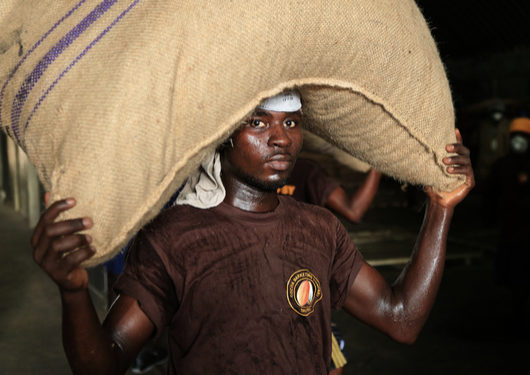
Visit Our Sponsors |
|
|
|
|
|
|
|
|
|
|
|
|
|
|
|
|
|
|
|
|
|
|
|
|
|
|
|
|
|
|
|
|
|
|
|
|
|
|
|
|
|
|
|
|
|
|
|
|
|
|
|
|
|
|
|
|
|
|
|

But as of the latest estimate, 2.1 million West African children still do the dangerous and physically taxing work of harvesting cocoa. What will it take to fix the problem?
The boy with the machete is watching us. We’re sitting in an SUV in the middle of a rugged, red-dirt road about 10 miles outside the city of Abengourou, in eastern Ivory Coast. It’s just after 8 a.m. on a Saturday, and the early morning haze hasn’t yet burned off, so a mist hangs over the fields around us. We’ve been slowly bumping along on our way to meet some farmers in a nearby village called Appoisso but stop for a moment to take in the scene. Suddenly the boy is standing right next to us. He looks curious, but wary too.
We scramble out to greet him. In French my translator asks him his name. “Ibrahim Traoré,” he replies. How old is he? “Fifteen.”
Ibrahim is wearing ripped jeans, a worn, royal-blue Chelsea soccer shirt with the name of the team’s sponsor — Samsung — in large white letters across the front, and the same kind of clear plastic sandals that are everywhere in this part of West Africa. He holds his dusty blade casually against his left hip.
There’s a sign behind him that appears to have been erected by the Ivorian government as part of a campaign to educate farmers about children’s rights. Non it says in big, red letters. Then, again in French: “The worst forms of child labor.” Below that is a drawing of a young boy carrying a huge sack of cocoa beans with a big X over it. Underneath is another sentence: “The place for children is in school.”
Ibrahim tells us that he was born in Mali. He moved with his father to Ivory Coast when he was little — he’s not sure exactly how old he was — and he’s been working on cocoa farms ever since. What about school? No, he says, he’s never been to school. Is the work he does hard? “Yes,” he says deliberately. “It’s very hard.”
Read more
RELATED CONTENT
RELATED VIDEOS
Timely, incisive articles delivered directly to your inbox.


